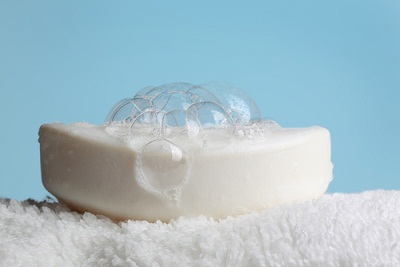What Athletes, Coaches, and Parents Need to Know About MRSA
By Dan Peterson, TeamSnap's Sports Science Expert
Methicillin Resistant Staphylococcus Aureus (MRSA) causes infections in different parts of the body, and studies are showing the incidences are increasing among people who share close quarters or have more direct skin contact — like athletes. As a result, It is important that athletes, parents, athletic trainers, and coaches all work together to be educated about MRSA, as well as understand how to limit transmission, prevent infections, and identify infections early so that they can be treated.
 MRSA is spread by skin to skin contact, especially if someone has an open skin lesion or wound, or by touching contaminated objects. If drainage from an infected wound comes into contact with an object like a towel, bench, weight training equipment, or shared jar of ointment, the next person who touches that object may become colonized and/or infected with the MRSA bacterium.
MRSA is spread by skin to skin contact, especially if someone has an open skin lesion or wound, or by touching contaminated objects. If drainage from an infected wound comes into contact with an object like a towel, bench, weight training equipment, or shared jar of ointment, the next person who touches that object may become colonized and/or infected with the MRSA bacterium.
In athletes, MRSA typically affects the skin and can look like a spider bite, boil, or pimple. It can be red, swollen, painful, and pus-filled, and may ooze. Common sites of infection include areas where skin is broken by cuts or scrapes, areas that equipment rubs against, or sites of shaving: back of neck, groin, buttock, armpit, or beard area on men.
Here are some common misconceptions about MRSA and some facts athletes, coaches and parents should know:
Myth: MRSA cannot be treated.
Fact: There are a number of antibiotics that can be taken by mouth, as well as intravenously, that can be used to effectively treat and cure infections caused by MRSA.
Myth: Once I have MRSA, it will never go away.
Fact: This is incorrect. As previously mentioned, there are a number of antibiotics that can be used to treat MRSA and strategies that can be used to prevent recurrent infections. However, not all patients require medication; people only require antibiotic therapy in certain circumstances of infection.
Myth: Kids with MRSA should be excluded from school.
Fact: Kids with MRSA do not need to be excluded from school and children do not need to be excluded from daycare environments, so long as any open, draining lesions can be adequately covered.
Myth: I can’t participate in sports anymore once I am known to have MRSA.
Fact: An athlete may return to play under these conditions:
1) Once a suspicious lesion has been tested for MRSA and then placed on the appropriate antibiotic for at least 72 hours
2) Drainage from the wound has stopped
3) No new lesions have developed in the past 48 hours.
If an athlete suffers from recurrent infections, he or she can be evaluated by a specialist who can help with this issue.
 What can athletes, parents, trainers and coaches do to prevent MRSA infections?
What can athletes, parents, trainers and coaches do to prevent MRSA infections?
Good hygiene cannot be underestimated. Athletes should clean their hands and skin often with soap and water or alcohol sanitizers, as well as shower after participation in sports. Cover scrapes and cuts with a bandage to help prevent bacteria from entering a wound. Do not share towels or other personal items such as razors or bar soap. Athletes should notify someone immediately if they have any signs or symptoms of an MRSA infection so that they can be evaluated and treated if necessary.
Wendi Drummond, DO, is a pediatric infectious disease specialist affiliated with Rocky Mountain Hospi-tal for Children in Denver and a member of the TeamSnap Health & Fitness Advisory Board. She is on the 5280 Magazine “Top Doc List” for 2013.
NEW! Free Sports Organization Resources
All of TeamSnap's ebooks, articles, and stories in one place. Access Now
Similar Articles:
Top 5 Breakfast Ideas For Kids and Young Athletes
They say that breakfast is the most important meal of the…
Read More

Olympic Sports Nutrition Advice For Everyone
By Dan Peterson, TeamSnap's Sports Science Expert. Right…
Read More
The Best Healthy Snacks for Kids & Young Athletes
If you want your kids to get out there and play their best,…
Read More
